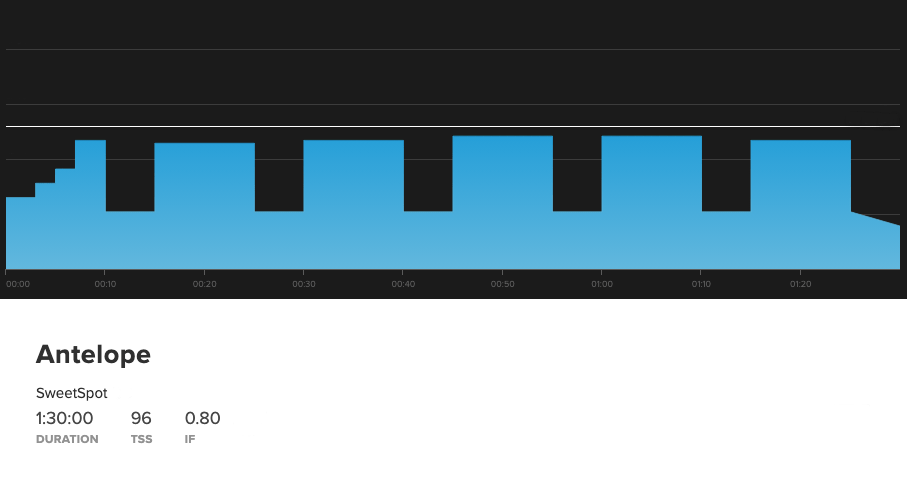The Aerobic Energy System: What it is, Why it’s Important, and How to Train it

The human body has 3 main methods for using energy to sustain itself and fuel exercise. These physiological pathways are called energy systems, and the most important of these for endurance athletes is the aerobic energy system. Let’s take a closer look at how your body utilizes the aerobic system to power you on your bike, and how you can train this system to be more efficient and effective.
Key Takeaways:
- The aerobic energy system uses oxygen to sustainably release energy
- Cycling is primarily aerobic, even during high-intensity events
- Aerobic fitness is a common limiter for athletes in all disciplines
- Traditional aerobic base training requires a huge investment of time
- Sweet spot base training is the most efficient way for real-world athletes to make big aerobic gains
What is the Aerobic Energy System
The food you eat contains energy. For this energy to be usable by your body, it must be converted to ATP, or Adenosine Triphosphate. Often referred to as the “energy currency” of biology, this molecule allows cells to turn energy into work. The more ATP produced, the more energy is available.
The aerobic energy system is the method by which cells generate ATP in the presence of oxygen. The process is extremely complicated, but we’ll look at a simplified version that occurs over the course of 3 main steps. Note that while the example given here follows the metabolism of sugar (glucose), fat can also be used as a fuel. This is called lipolysis and involves slightly different starting chemistry, but most of the process is the same.
1. Glycolysis
Occurring in the cytoplasm of the cell, glycolysis splits 6-carbon glucose molecules into 3-carbon molecules called pyruvate. In doing so it directly produces a small amount of ATP, but energy production is not the real purpose of this step. Instead, production of pyruvate is key, and this molecule enters the mitochondria for the next step in the process.
2. The Citric Acid Cycle
In the mitochondria, pyruvate is oxidized and begins the Citric Acid Cycle, also referred to as the TCA cycle or Krebs Cycle. This complicated and continuous process includes 8 major steps. It produces a large amount of CO2 as a byproduct, which is passed to the blood and exhaled.
Like Glycolysis, the citric acid cycle doesn’t generate much energy on its own. Its most important output comes in the form of the molecules NADH and FADH2. These compounds power the next and final part of the process, where most of the body’s ATP gets made.
3. Oxidative Phosphorylation
As its name suggests, this final part of the aerobic system incorporates oxygen, and is the main reason your body needs oxygen to survive. In this step, NADH and FADH2 molecules pass electrons to a series of proteins and organic compounds in the mitochondrial membrane called the electron transport chain. Eventually, the electrons are transferred to oxygen in a reaction that creates a proton gradient and drives the synthesis of ATP. This is called chemiosmosis and can produce 30-32 molecules of ATP from a single starting molecule of glucose.
Why the Aerobic Energy System is Important to Cyclists
Cycling is an endurance sport, and the aerobic system is the main source of energy for all sustained exercise. Short surges of a few seconds are primarily anaerobic, but maximal efforts of 70 seconds see an equal energy contribution from aerobic and anaerobic sources. For anything longer, the aerobic system is the primary driver.
Aerobic metabolism produces ATP slowly, but if ample fuel is present it can sustain almost indefinitely. Ultra-endurance cycling events and full-distance triathlons are testaments to this, but even short and intense races primarily rely on aerobic energy.

For example, only a small overall percentage of time in a criterium is actually spent anaerobically, with aerobic efforts filling the gaps in between. Moreover, the aerobic system still contributes during harder surges – it helps to metabolize the byproducts of anaerobic metabolism and aids in recovering from repeated attacks.
Aerobic capability is a common limiter for racers in all disciplines. Even if the key moment of a race occurs at high intensity, riders who have greater aerobic fitness arrive at that moment fresher and with less fatigue. The aerobic energy system is thus the foundation of an endurance athlete’s success. Improving aerobic capabilities makes an athlete stronger, across the board.
How to Train The Aerobic System
Aerobic metabolism occurs mostly in type 1 (slow twitch) and type 2a (fast oxidative) muscle fibers. A strong aerobic system delivers an ample supply of oxygen from the blood to the muscles. It also depends on the muscles’ capability to utilize this oxygen in the mitochondria, and their capacity to utilize stored fuel.
Aerobic conditioning targets all these underlying components. Goals of aerobic training include increasing the heart’s stroke volume, improving muscular glycogen storage, increasing muscular capillarization, and developing greater mitochondrial density. The best way to target these adaptations is through periodized, structured training, which starts by addressing an athlete’s base fitness.
Adaptive Training
Get the right workout, every time with training that adapts to you.
Check Out TrainerRoadAerobic Base Training For Cyclists
Aerobic base training has traditionally been associated with long, slow rides. These rides almost exclusively target slow-twitch fibers, and can improve fat utilization and aerobic efficiency. The downside of this approach is that it requires a huge amount of time to be effective. If you’ve ever wondered why pro riders sometimes train more than 30 hours a week, this is the answer. Unless you’re starting from a very low level of fitness, this approach does not stress the body enough to trigger significant adaptations when employed at low volumes.
For athletes with jobs, families, and time limitations, sweet spot training is the best way to develop a strong aerobic base. Sweet spot targets both type 1 and type 2a muscle fibers in an extremely efficient way. In addition to aerobic capacity, it also develops muscular endurance and stamina, and raises an athlete’s tolerance for riding at high intensity. Unless you have unlimited training time, we highly recommend this approach.
Aerobic Interval Training
TrainerRoad’s Sweet Spot Base plans utilize a time-efficient approach to developing aerobic fitness. Workouts in these plans typically include reasonably long intervals at 88% – 94% of a rider’s functional threshold power (FTP). This intensity is close enough to threshold to be challenging and productive, without creating a lot of excess fatigue. Rest intervals are interspersed to allow recovery and to help achieve the maximum benefit from each workout.

A good example is the workout Antelope. In 90 minutes of total riding time, Antelope includes a short warmup followed by 5x 10-minute intervals around 90% of FTP. Rest intervals of 5 minutes fall between each sweet spot effort. With an overall intensity factor (IF) of .80, Antelope packs a lot of productive work into a short period, but balances that work with plenty of recovery. Workouts like this allow you to gain major aerobic adaptations without the time requirements of traditional low-intensity aerobic approaches.
More on Energy Systems
For more cycling training knowledge, listen to Ask a Cycling Coach — the only podcast dedicated to making you a faster cyclist. New episodes are released weekly.
